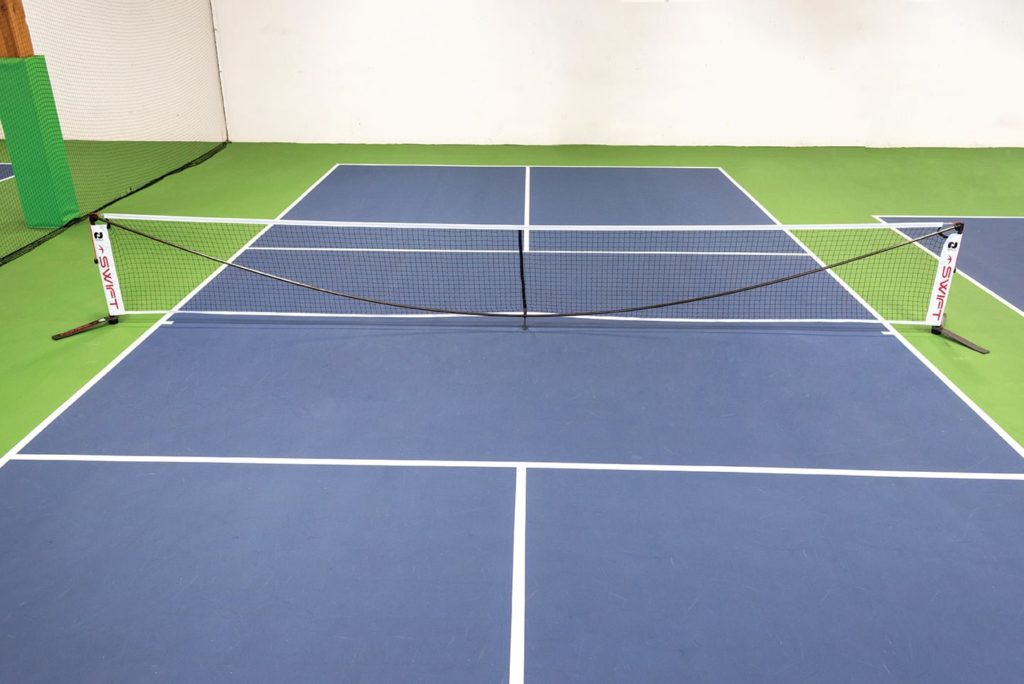Constructing a Pickleball Court Construction-- Professional Construction for Quality Play
Constructing a Pickleball Court Construction-- Professional Construction for Quality Play
Blog Article
Lasting Practices in Pickleball Court Building And Construction You Need To Know
As the popularity of pickleball remains to climb, so also does the demand for lasting methods in court building. This strategy not just addresses ecological worries but additionally improves the longevity and performance of the courts. From choosing eco-friendly products to carrying out effective drainage and energy-saving lights options, there are various techniques to consider. Yet, the influence of these methods expands much past the court itself. Recognizing exactly how each element adds to a much more sustainable future welcomes further exploration into the detailed equilibrium between entertainment growth and ecological stewardship.
Picking Eco-Friendly Products
Choosing green materials is an essential action in the construction of sustainable pickleball courts. The choice of lasting products not only decreases ecological influence yet also improves the longevity and efficiency of the court. Key materials include reused rubber for the surface, which uses outstanding sturdiness and shock absorption while diverting waste from landfills.
Additionally, making use of in your area sourced materials lowers transport exhausts and supports regional economies. Pickleball court construction. For instance, utilizing indigenous woods for fence and seating can give a lasting visual while making certain resilience versus the aspects.
Incorporating permeable products for court structures can even more add to sustainability by enabling all-natural water drainage and lowering runoff. These selections not only shield regional communities yet likewise promote much healthier play atmospheres.
Efficient Drain Solutions
While the selection of environment-friendly products is necessary, implementing effective water drainage solutions is similarly critical for preserving sustainable pickleball courts. Correct drainage not only secures the court surface area from water damage but likewise decreases disintegration and drainage, promoting environmental stability.
Reliable water drainage systems can consist of permeable paving, which permits water to penetrate the ground instead of merging externally. This reduces the probability of standing water, which can cause mold and mildew and various other maintenance problems. Additionally, including strategically positioned water drainage networks and swales can guide excess water away from the court area, ensuring a dry playing surface area and protecting against dirt erosion.
Utilizing native vegetation in the landscape design around the courts can additionally boost drain by soaking up excess water and lowering runoff. These plants need much less watering and advertise biodiversity, aligning with lasting methods.
In addition, it is crucial to routinely preserve the water drainage system to guarantee its lasting efficiency. This includes clearing particles and tracking for clogs. By prioritizing effective water drainage services, pickleball court producers can significantly add to the sustainability and long life of the facility, inevitably benefiting both gamers and the atmosphere.
Energy-Efficient Illumination Options
As the demand for pickleball proceeds to grow, incorporating energy-efficient illumination alternatives right into court design has come to be progressively vital for sustainability. Standard lights systems typically eat too much power, contributing to higher functional expenses and environmental effect. As a result, taking on modern, energy-efficient technologies is vital for both brand-new building and constructions and restorations.
LED (Light Emitting Diode) lights sticks out as a leading selection due to its durability and energy savings (Pickleball court construction). Contrasted to traditional lights, LEDs make use of approximately 75% less energy and can Going Here last as much as 25 times longer, considerably decreasing maintenance costs. The directional nature of LED lights minimizes light contamination, ensuring that illumination is concentrated on the court rather than surrounding areas.

Sustainable Surface Area Alternatives
Exploring lasting surface alternatives for pickleball courts has gained traction amongst building contractors and players alike. The focus on environment-friendly products not only aligns with the expanding ecological awareness however additionally enhances the performance and longevity of the courts.
This product provides exceptional shock absorption, lowering the danger of injuries for gamers while advertising sustainability. These tiles are easy to change and install, and their flexibility permits for different court arrangements.
All-natural lawn courts are additionally emerging as a lasting choice, promoting biodiversity and lowering the warmth island result. Nonetheless, they call for regular maintenance and water, which might not straighten with all sustainability objectives.

Water Conservation Strategies

An additional effective strategy involves the setup of rainwater harvesting systems. These systems gather and keep rainwater for use in preserving court surface areas and landscaping. This strategy not only saves potable water but also reduces dependence on municipal resources.
Moreover, employing drought-resistant landscaping around the courts is crucial. Indigenous plants call for less water and are much better adjusted to neighborhood climate conditions, therefore lowering total water usage. In addition, using reliable irrigation systems, such as drip watering, ensures that water is supplied straight to plant roots, minimizing dissipation and waste.
Conclusion
Integrating sustainable practices in pickleball court building and construction significantly adds to ecological conservation and resource effectiveness. By focusing on these practices, the building of pickleball courts can align with broader ecological goals while promoting longevity and performance within areas.
As the popularity of pickleball continues to increase, so too does the official website requirement for sustainable practices in court building.Picking green products is an important step in the building of sustainable pickleball courts. By prioritizing energy-efficient illumination options, pickleball court manufacturers can contribute to a more lasting future while satisfying the demands Find Out More of stakeholders and gamers alike.Integrating lasting surface options not just improves the performance of pickleball courts but additionally leads the way for executing reliable water conservation techniques.Incorporating lasting techniques in pickleball court building and construction substantially contributes to ecological conservation and resource performance.
Report this page